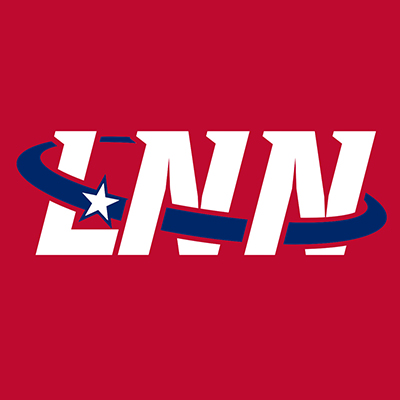The Government of Liberia’s landmark rail agreement with Ivanhoe Atlantic has received a new wave of endorsement from the United States, following a high-level meeting between President Joseph N. Boakai and U.S. Deputy Secretary of State Christopher Landau in Washington.
According to a statement from U.S. State Department Spokesperson Tammy Bruce, Deputy Secretary Landau “lauded last week’s important agreement to increase multi-user access to Liberia’s railway to further facilitate economic development for the benefit of both countries.” The two leaders also discussed U.S.-Liberia cooperation in mining, private enterprise, and security, ahead of the July 9–11 U.S.-Africa summit hosted by President Donald J. Trump.
The statement marks the strongest diplomatic validation yet for the Concession and Access Agreement signed between the Government of Liberia and U.S.-owned Ivanhoe Atlantic on July 4, 2025. The agreement allows for third-party access to the Yekepa-to-Buchanan railway corridor, ending more than two decades of exclusive control by ArcelorMittal Liberia. The U.S. Embassy in Monrovia described the deal—estimated at US$1.8 billion over 25 years—as “a crucial step towards President Boakai’s objectives of developing Liberia’s multi-user rail policy and securing new international investment.”
But the road to this milestone was long and politically fraught. The agreement is the culmination of over six years of diplomatic and commercial engagement between Ivanhoe Atlantic and the Government of Liberia, beginning with the 2019 ratification of a Bilateral Implementation Agreement between Guinea and Liberia. That pact allowed ore from Guinea’s Nimba region to be shipped through Liberian territory, making access to the Buchanan Port essential for any cross-border mining development.
In 2021, Liberia’s Ministry of Transport formally designated Ivanhoe Liberia as an “eligible transport company”—a legal requirement under the terms of the Bilateral Agreement. A year later, the Government of Liberia and Ivanhoe signed a Framework Agreement to begin final negotiations toward a long-term access deal. Under that framework, Ivanhoe paid $37 million in upfront fees directly into Liberia’s Consolidated Revenue Account at the Central Bank, a rare display of good-faith payment well ahead of a ratified agreement.
Despite this significant investment, the Framework Agreement stalled under the administration of former President George Weah. According to officials familiar with the matter, strong lobbying by ArcelorMittal and a lack of backing from then-Finance Minister Samuel Tweah—an influential member of the Inter-Ministerial Concessions Committee (IMCC)—prevented the agreement’s finalization. For nearly two years, negotiations remained in limbo.
That changed in 2024, when President Boakai came to power and immediately made rail liberalization a cornerstone of his infrastructure agenda. In February of that year, Robert Friedland, Chairman of Ivanhoe Capital Corporation, led a high-level delegation to Monrovia to unveil plans for the Liberty Corridor, a long-term infrastructure initiative intended to connect Liberia’s port and mining infrastructure with broader regional trade routes.
While the Liberty Corridor remains in its feasibility study phase, Friedland stressed the importance of concluding a near-term access agreement to begin exporting ore from the Nimba region via the existing railway and port. In the months that followed, Ivanhoe and the IMCC held nearly monthly technical and ministerial meetings to finalize the terms of the agreement.
According to persons involved in the negotiations, President Boakai maintained consistent involvement, receiving updates and hosting a second visit from Friedland in February 2025 to assess progress. By early July 2025, the parties concluded the agreement, which was signed at the National Investment Commission headquarters on July 4, in the presence of senior government officials and Ivanhoe representatives.
What makes this agreement transformative is its timing and scope. In addition to allowing Ivanhoe access to Liberia’s existing transport infrastructure, the agreement formally opens the Yekepa-Buchanan corridor to multi-user access under Executive Order 136. This framework not only ensures fair and non-discriminatory access to the rail but also supports the government’s vision of an independent rail operator regime managed under the National Rail Authority.
The economic implications are vast. The corridor sits atop an estimated 12 billion tons of iron ore reserves between Liberia and Guinea, much of it currently held in exploration licenses. With the rail corridor now opened to multiple users, other mining and logistics companies are expected to invest in transportation infrastructure, potentially unlocking billions of dollars in long-term revenue for Liberia.
Deputy Secretary Landau’s statement also referenced Liberia’s upcoming term on the United Nations Security Council, underscoring the country’s growing geopolitical importance. The July 9–11 U.S.-Africa summit offers an opportune platform for Liberia to showcase its new era of resource diplomacy and infrastructure reform.
As President Boakai meets President Trump at the White House this week, the Ivanhoe agreement offers more than symbolism—it represents the transition of Liberia’s relationship with the United States from aid to strategic partnership. The message from Washington is clear: investment, transparency, and mutual prosperity are now the pillars of U.S.-Africa relations.
Liberia, armed with a landmark rail deal, is ready to embrace that new paradigm.


